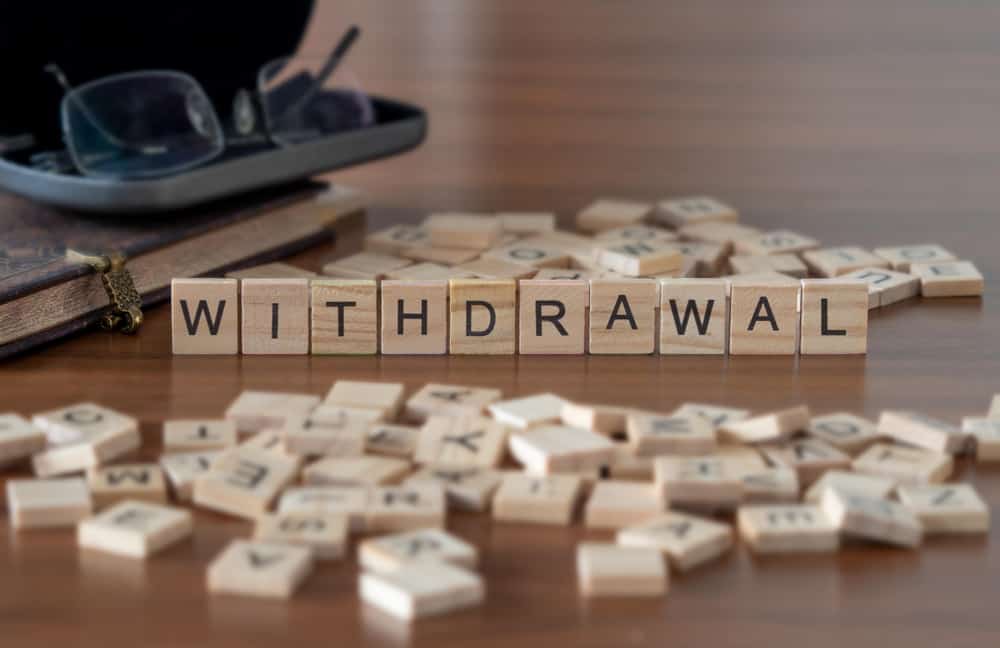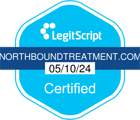Opioids (sometimes called narcotic analgesics) are a class of potent and immensely addictive substances. They include both illegally manufactured drugs and pharmaceutical medications used to treat moderate-to-acute levels of pain. Opiates are a category of opioids containing the active ingredient opium, which is sourced from poppy plants. That said, many people use the terms “opiate” and “opioid” interchangeably, as they both refer to powerful, habit-forming narcotics with similar effects.
The opioid epidemic is devastating the nation and doesn’t appear to be slowing down. According to the CDC (Centers for Disease Control and Prevention), there were almost 47,000 opioid-related overdose deaths in the United States in 2018, which is roughly six times the fatalities recorded in 1999[1].
And as the global coronavirus crisis ravages on, so does the U.S. drug epidemic. A recent report from the American Medical Association (AMA) Advocacy Resource Center outlines rising concerns about opioid-related mortality amid the pandemic. More than 40 states (including California) have reported spikes in opioid overdose deaths, many of which involved illegally produced fentanyl[2]. For more opioid addiction facts, and to learn the difference between opioid vs opiate, head over to our blog.
If you or someone dear to you is facing opioid addiction, you might be wondering about the opioid detox process. What happens when you detox, what are the symptoms of opiate withdrawal, and how long do opiate withdrawal symptoms last? Northbound Treatment has been helping individuals overcome opioid use disorder (OUD) for over 30 years at our rehabilitation center, and we’re here to answer your questions. Find details about what to expect from detoxification and a breakdown of the opioid withdrawal timeline below.
What Is the Opioid Withdrawal Timeline?
Drug abuse often results in a high tolerance, meaning more of the substance is needed to achieve the same effect. High tolerance can quickly lead to dependence, and when a person is dependent on opioids, they typically feel like they don’t feel normal without their drug of choice.
Sadly, opioid dependence often coincides with addiction. If someone is addicted or dependent on a drug, they’ll usually experience withdrawal symptoms when they go longer than a few hours without a dose. This happens because, when a person gets used to the presence of narcotics in their system, the body must adjust to functioning without them. In many ways, someone going through a medical detox from opiate drugs exhibits similar symptoms to someone undergoing a heroin withdrawal.
The opioid withdrawal timeline can be broken down into three phases: anticipatory, early acute, and fully developed. Here’s what to expect from each stage.
Anticipatory Stage (4–5 Hours)
The anticipatory stage of opioid withdrawal usually sets in four to five hours after the last dose. During this phase, many people start to feel anxious about the thought of going without drugs, especially those who’ve experienced withdrawal before. Some addicts also become irritable and restless. Opiate cravings will begin as they battle the urge to acquire more drugs.
Early Acute Opioid Withdrawal Symptoms (7–10 Hours)
The onset of physical withdrawal symptoms typically occurs seven to ten hours after the last dose of opioids. At this point, most addicts start to experience flu-like effects, such as fever, hot flashes, chills, body aches, sweating, upset stomach, vomiting, or diarrhea.
Psychological symptoms will intensify as well. You can expect heightened irritability, anxiousness, mood swings, and strong drug cravings. Since another dose of opioids would temporarily alleviate the uncomfortable symptoms, the temptation to use again will be eminent.
Fully Developed Acute Opioid Withdrawal Symptoms (24–72 Hours)
Fully developed acute withdrawal symptoms occur 24 to 72 hours following the last dose of drugs. This is when the detox process will reach a peak. Most addicts experience worsened flu-like symptoms at this stage, along with elevated anxiety and feelings of depression. These symptoms may be met with increased blood pressure, body tremors, insomnia, headaches, cramping, or shaking.
When opioid cravings peak, an addict’s temptation to relieve their suffering with another dose will reach an all-time high. In certain cases, people undergoing a medical detox will exhibit severe withdrawal symptoms, including hallucinations, delirium tremens (DTs), seizures, suicidal thoughts, and hypovolemic shock, all of which are extremely dangerous without medical supervision.
How Long Do Opiate Withdrawal Symptoms Last?
How long does it take to detox from opiates and opioids? As we mentioned, withdrawal symptoms reach a peak one to three days following the last dose of drugs. However, the fully developed acute phase can last for a few days. After that, the most extreme effects will begin to taper off.
This is a pivotal milestone of detox, as it helps recovering addicts see that their discomfort won’t last forever — like a light at the end of the tunnel. One to three days later, a majority of opioid withdrawal symptoms will subside. In most instances, people finish detoxing within five to ten days.
Detoxification eliminates a person’s physical dependence on opioids. Having said that, many opioid addicts continue to have anxiety, mood swings, difficulty sleeping, concentration issues, and sporadic drug craving episodes for one or two years after detoxing. The process is incredibly challenging, both mentally and physically, but it’s an essential first step in the path to sobriety and lifelong vitality.
Safely Detoxing from Opioids
Recovering from opioid addiction is a long-term endeavor. The detox process is relatively short in the grand scheme of things, and yet it should still be taken seriously. Chronic opioid abuse desensitizes the body to the effects of the drug[3]. When a high tolerance and drug dependence are at play, withdrawal symptoms can be extreme. Though you may want to detox while living at home, it can be dangerous. Many addicts are tempted to use again to relieve their symptoms, but as the body detoxifies and tolerance goes down, the risk of accidental overdose goes up.
This is one of several reasons why we strongly suggest safely detoxing from opioids in a medically supervised environment. Withdrawal symptoms are often more severe and last longer when individuals detox at home. This is because, with a clinically supervised program, specialists are there to help mitigate and alleviate some of the effects. Also, some symptoms can put a person’s life at risk. For instance, an individual experiencing excessive sweating may be so uncomfortable or distracted that they don’t drink water. Severe dehydration can be life-threatening, which is why many receive intravenous fluids to ensure they stay hydrated during detox.
Withdrawal symptoms can be excruciating, but going through them is a critical stepping stone to lifelong sobriety, health, and happiness. Northbound Treatment offers a fully licensed inpatient detox program in Orange County. We provide our clients with comfortable, safe, and secure care while they overcome this initial hurdle to recovery. Once a client stabilizes, we evaluate their physical and psychological health status to determine the next steps of rehab.
Northbound Offers a Full Continuum of Care for Opioid Addiction Treatment
Our accredited detox program is one component of the full continuum of care we offer at Northbound Treatment. Following detox, many clients transition into a residential rehab program for 30 to 90 days (or sometimes longer). The next stage is usually intensive outpatient (IOP) treatment, during which they can continue rehab while living at home or in a sober living facility. We also offer telehealth outpatient treatment for those who can’t commute to our rehab centers or may want to practice physical distancing amid the coronavirus pandemic. After outpatient treatment, we provide addiction support services for those who need ongoing guidance and accountability.
Dual Diagnosis Treatment for Opioids
Many patients who enroll in our rehab programs have a dual diagnosis, meaning they battle co-occurring substance use disorder (SUD) and mental illness. Our fully integrated dual diagnosis treatment program approaches opioid addiction treatment by addressing all potential causes and factors at play.
With a comprehensive treatment plan, individuals are able to identify triggers and develop tools and strategies to cope with mental distress. Ultimately, they can achieve sobriety while sorting out their psychological and emotional setbacks, finding themselves, and learning to live a happy, drug-free life.
Are you or a loved one battling opioid addiction? Please contact us at Northbound Treatment today. We’re enrolling new patients every day, and we’d love to hear from you. Call us at (844) 919-0403 to get started.
External sources:
1. https://www.healthline.com/health/opiate-withdrawal
Author
-

President, CEO & Founder at Northbound Treatment Network
Paul Alexander is the CEO, President & Founder of Northbound Treatment Network in Newport Beach, California. He believes wholeheartedly in transformational leadership, organizational health and effective, fully integrated substance use disorder and mental health treatment. With over 27 years of experience in behavioral healthcare, Paul has extensive knowledge of “in vivo” treatment modalities, clinical development, operations, strategy, marketing and financial planning. He has been widely recognized for his development of collegiate-based residential treatment programs for students in recovery and authored a research study at The University of California confirming this modality’s effectiveness.
Paul’s comprehensive professional experience, willingness to innovate, and emphasis on organizational health are vital factors in Northbound’s continued success. Paul received his Certified Addiction Treatment Specialist training at Saddleback College in Mission Viejo, CA, and was awarded Outstanding Alumni Service Award in 2002. Paul holds a Bachelor of Arts degree in Criminology, Law and Society, Summa Cum Laude, from University of California, Irvine, and a Juris Doctorate degree from Loyola Law School of Los Angeles. Paul currently serves on The National Association of Addiction Treatment Providers (NAATP) board. In addition, he serves on The Family Recovery Foundation board and The CarePossible board in Orange County; both organizations are committed to raising funds for family recovery and treatment for former military personnel. Paul is in recovery himself and lives in Orange County with his wife Silvana and his two young sons, Noah and Dean.










